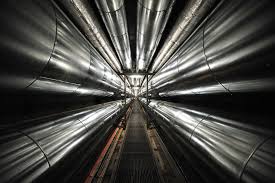
Breaking News
 Former Pfizer Vice President: COVID Shots Were 'Designed To Cause Injury,' Reduce Fertility
Former Pfizer Vice President: COVID Shots Were 'Designed To Cause Injury,' Reduce Fertility
 A List of Family Entertainment
A List of Family Entertainment
 US Launches at Least Four More Airstrikes in Somalia as Record-Shattering Bombing Campaign Continues
US Launches at Least Four More Airstrikes in Somalia as Record-Shattering Bombing Campaign Continues
 "Ben Shapiro, fu*k you and the midget horse you rode in on.
"Ben Shapiro, fu*k you and the midget horse you rode in on.
Top Tech News
 Perfect Aircrete, Kitchen Ingredients.
Perfect Aircrete, Kitchen Ingredients.
 Futuristic pixel-raising display lets you feel what's onscreen
Futuristic pixel-raising display lets you feel what's onscreen
 Cutting-Edge Facility Generates Pure Water and Hydrogen Fuel from Seawater for Mere Pennies
Cutting-Edge Facility Generates Pure Water and Hydrogen Fuel from Seawater for Mere Pennies
 This tiny dev board is packed with features for ambitious makers
This tiny dev board is packed with features for ambitious makers
 Scientists Discover Gel to Regrow Tooth Enamel
Scientists Discover Gel to Regrow Tooth Enamel
 Vitamin C and Dandelion Root Killing Cancer Cells -- as Former CDC Director Calls for COVID-19...
Vitamin C and Dandelion Root Killing Cancer Cells -- as Former CDC Director Calls for COVID-19...
 Galactic Brain: US firm plans space-based data centers, power grid to challenge China
Galactic Brain: US firm plans space-based data centers, power grid to challenge China
 A microbial cleanup for glyphosate just earned a patent. Here's why that matters
A microbial cleanup for glyphosate just earned a patent. Here's why that matters
 Japan Breaks Internet Speed Record with 5 Million Times Faster Data Transfer
Japan Breaks Internet Speed Record with 5 Million Times Faster Data Transfer
China Mass Production of Nuclear Thermal Power Could Reach 1 Cent per KWH

This is close to the one-cent target of the Anthropocene Institute. China is planning to build a lot of nuclear regular third-generation nuclear reactors and drive costs down by 40%. Learning to build Nth reactors cheaper could drive the costs of deep pool reactors to 1 cent per kilowatt-hour. Mass production and process improvements could then bring this solution to the one-cent per kwh target.
The cost projection is for a kilowatt-hour of thermal power but this heat can displace a large usage of coal. There is also a projection that China could mass-produce regular nuclear reactors for electrical power. The projection is that they could reduce costs by 40% from today's costs. This would get nuclear electric costs in 2030 to potentially less than 3 cents per kwh for electricity.
In 2014, the levelized cost of electricity (LCOE) in China was 4 cents per kwh for hydroelectric and other renewable energy (RE) power had costs ranging from 5 to 11 cents per kwh.
The nuclear district heaters will already be near the cost of traditional coal-fired boilers in China and around 40 percent of the cost to produce the same amount using a gas-fired boiler. China is not importing enough natural gas from Russia and other sources. A trade deal with the US would likely involve a lot of liquified natural gas which is more expensive.

 Advanced Propulsion Resources Part 1 of 2
Advanced Propulsion Resources Part 1 of 2

